It’s 2015, the year of the Bullshit Centenary. One hundred years ago a young immigrant poet submitted his poem “The Triumph of Bullshit” for publication in a London avant‑garde magazine. The editor’s letter explaining his rejection of the work makes clear he decided to “stick to my naif determination to have no ‘Words ending in -Uck, -Unt and –Ugger’.” Probably the word “bullshit” was imported from the poet’s native US; but so far no one has found “bullshit” in print as a single word before 1915.
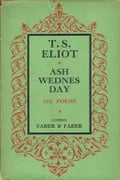
The young immigrant poet thought the rejection of his poem disappointingly puritanical. He was finding it hard to get his verse into print. Four years earlier, at the age of 22, he had completed his first masterpiece. Though he had shown it to a few friends in the US and had read it aloud to fellow students in England, in January 1915 it remained unpublished. At least one editor considered it borderline insane; another was “unable to make head or tail” of it. Its title was “The Love Song of J Alfred Prufrock”.
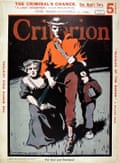
This year also marks the centenary of the first publication of TS Eliot’s most famous early poem. Prufrock’s “Love Song” first appeared in the US, tucked away towards the back of a small magazine, probably because the editor did not greatly care for it. Two years passed before this disconcerting poem was published in Eliot’s first book, but today most critics realise that it announces the arrival in verse of English-language literary modernism.
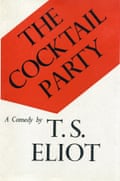
At Harvard, where Eliot did most of his studying, there will be an exhibition at the Houghton Library later this year to mark the centenary of Prufrock’s emergence in print. The US, long wary of Eliot as a sort of cultural traitor, is coming to terms with its greatest poet.
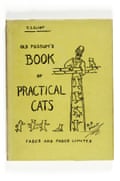
It remains to be seen how much attention will be paid to another, more solemn anniversary. Fifty years ago this month (after being nursed through bouts of ill health by his shrewd second wife, Valerie, who had been his secretary and who lived until 2012), TS Eliot died in London. He was by then no longer a young bullshitter but the incarnation of his art form. He was not just the most famous poet alive, but regarded (as many still regard him) as the finest poet of the 20th century. Internationally lauded, he had been awarded the Nobel prize, the Dante Gold Medal, the Goethe prize, the US Medal of Freedom and the British Order of Merit. Adults knew him as the poet not just of “Prufrock”, but also of The Waste Land and Four Quartets; theatre audiences had flocked to his plays such as Murder in the Cathedral and The Cocktail Party at the Edinburgh festival, in London and on Broadway; at home and at school, children relished “Macavity”, one of the poems from his Old Possum’s Book of Practical Cats, just as eagerly as later audiences have delighted in Cats, the musical based on those poems. On 4 February 1965 Eliot’s memorial service filled Westminster Abbey.
Fifty years later, “difficult” remains the word most people attach to his verse. Yet we quote him: “Not with a bang but a whimper”, the last line of Eliot’s poem “The Hollow Men” is among the best-known lines of modern poetry. “April is the cruellest month” begins The Waste Land with unsettling memorability; no reader forgets the strangeness of the “patient etherised upon a table” at the start of “The Love Song of J Alfred Prufrock”. Eliot’s mastery of the pliancy of language gives his poetry an insistency of sound and image that seems ineradicable.
Yet, in writing his biography, I’ve come to realise the difficulty in reconciling the po-faced “Pope of Russell Square” (as the older Eliot came to be nicknamed) with the young immigrant poet of “The Triumph of Bullshit”. Was it simply that Eliot ossified as he aged? To some extent, yes, respectability clamped him into place; but he understood imaginative freedom. He both recognised and skewered in Four Quartets the routines of “eminent men of letters” who became “chairmen of many committees”. As a banker, then as a publisher, he worked at jobs where committees were de rigueur and he accomplished his work with aplomb. Yet part of him always sought an escape hatch, a way to elude his official self. His nephew Graham Bruce Fletcher remembers Uncle Tom taking him as a boy to a London joke shop in the 1960s. They bought stink bombs and let them off at the entrance of the Bedford Hotel, not far from Eliot’s workplace in Bloomsbury’s Russell Square. With a fit of giggles, Eliot put on a marked turn of speed as, Macavity-like, he and his nephew sped from the scene of the crime, Eliot twirling his walking stick “in the manner of Charlie Chaplin”.

This subversive Eliot, the stink-bombing Nobel prizewinner, takes us closer to the young Eliot of “bullshit”. In the early months of 1915 the Eliot who relished that word was living in Oxford (“very pretty, but I don’t like to be dead”). He had come there to further his studies in philosophy at the university, but was longing for literary London, where he had made friends with his fellow American poet, the energetic, incisive, and eventually fascist-inclined Ezra Pound. Eliot’s parents were suspicious of their son’s wild avant-garde artistic associates, and made it clear that they expected him to return to Harvard to become a respected professor. Eliot didn’t want that. What kept him in England, though, was less literature than love. After knowing her for three months, he married the nervously vivacious Vivien Haigh-Wood who was, like himself, a fine dancer, a poetry lover, a Francophile. Both he and she were on the rebound from earlier relationships. Their marriage, a brave risk, was a disaster for both of them. More than half a century later, it would be caricatured, Hollywood-style, in the movie Tom and Viv. For Eliot, as he put it in the 1960s, marriage to Vivien “brought the state of mind out of which came The Waste Land”. Eventually, painfully, they separated, and Vivien ended her days in a mental institution in 1947. “I love Tom,” she once wrote, “in a way that destroys us both.”
To understand Eliot means coming to terms with “Tom”, not just with “TS”. This year, it will become easier to do that – not because there will be vast exhibitions devoted to his work, but because 2015 will bring us fuller accounts of Eliot than we have had to date. My biography’s title, Young Eliot, signals an intention to portray with detail and nuance the poet of The Waste Land – a figure who, some contend, was never young. Though this is not an “official” biography (Eliot did not wish his life story to be written), I am the first biographer who has been allowed to quote extensively from the poet’s published and unpublished writings. Doing so liberally makes it easier to realise how closely his vulnerable life and his brilliant poetry were sometimes painfully connected.
This is a milestone year for Eliot. In the autumn Jim McCue and Christopher Ricks will publish their long-planned edition of Eliot’s collected poems – the first ever edition to bring together fully the verse that he published throughout his career and the poetry that never saw the light of day. Some readers will be shocked to realise that among Eliot’s longest works is his series of sexist, racist poems about King Bolo and his Big Black Queen; these frat-boy poems allowed the sexually inexperienced student Eliot to perform a sort of sexual swagger that helped him bond with his Harvard cronies. They are, if you like, the B-side of Prufrock’s love song. Meticulous editing by Ricks and McCue promises us not just more Eliot than we have seen before, but also more scholarly footnotes. Equally densely annotated is the complete online prose which is being published by Johns Hopkins University Press. Eliot’s graduate student papers on German philosophy, “degrees of reality” and primitive ritual certainly relate to the “Unreal City” and vegetation rites of The Waste Land; many readers may feel they need the academic equivalent of satnav to figure it all out.
Eliot’s reputation has taken a battering in recent decades. In particular, he has been accused of antisemitism – a charge he denied. It seems to me that there are moments in his writings – both in material published and in material he kept private – that do invite this charge. There is clear evidence that his parents shared a markedly antisemitic prejudice, and it is hard to argue convincingly that Eliot completely outgrew this. Yet the publication of his complete prose promises to reveal also that he was among writers who spoke out unambiguously against Nazi persecutions; such a stance surely accords with the opposition to totalitarian government in his 1930s play Murder in the Cathedral. Eliot should not be regarded as a saint. Yet nor should he be demonised nor his work reduced to any single issue. He was sometimes wrong, repeatedly brilliant, sometimes insensitive and misogynistic. He was both preternaturally gifted and undeniably a man of his time.
So why does his work still matter? The reasons are hidden in plain sight – or, more accurately, in plain sound. Prufrock’s opening words say it all: “Let us go then, you and I … ” People often say that the poem begins with a buttonholing, vernacular tone: its voice sounds as if it has just sidled up to you. This is only half true. If the poem started by saying “Let’s go”, it would sound more vernacular: “Let us go” is slower, more stagey. If you say not “Let’s go”, but “Let us go”, you’ll sound less urgent, more mannered, more self-conscious. What “The Love Song of J Alfred Prufrock” introduces into English poetry more intensely than ever before is an acute fusion of modernity and self-consciousness. The modernity hits you like a sniper’s bullet when you encounter that mention of “a patient etherised upon a table” in the poem’s third line. From childhood, Eliot knew the Boston Public Gardens that contained – and still contain – the weird and wonderful-sounding Ether Monument (late 19th-century Boston was a pioneering centre for anaesthetic surgery); but nobody until Eliot had put such modern surgery into a love song. The wording of “Let us go” is subtler, yet perhaps more profoundly impressive. Those three words initiate the acute self-consciousness of modernist poetry in English. Every poet who writes in English inherits that self-consciousness that has insinuated itself into the language.
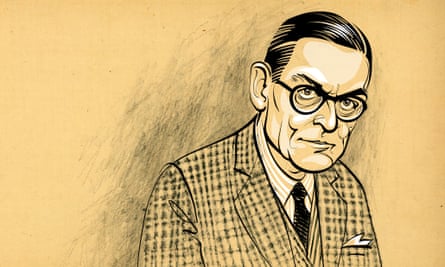
Because Eliot was a trained philosopher – he wrote a Harvard PhD on philosophy and his parents wanted him to pursue an academic career in the subject – he knew that the “self” in self-consciousness was unstable. “The Love Song of J Alfred Prufrock” maps an unstable self. The poem anatomises male anxieties about sex – anxieties that its author knew from experience and from inexperience; it hints, too, at how selves are constructed not just out of actions but also out of their lack, and out of language and reading, out of borrowed images. Prufrock, inhibitingly aware that, however indecisive, he is neither Hamlet nor Lazarus nor Salome, alludes (a little stagily) to all those roles. His self seems made out of role playing, or attempted acting; and yet, freighted with irony, there is still a sense of vulnerability and pain. Wittily, Prufrock refers to literature, to roles, but the irony hints at hurt. As it develops, up until The Waste Land and beyond, Eliot’s poetry goes on doing this, exhibiting the self as constantly conscious of other possible and impossible selves; and suggesting that literature is a sort of performance self-consciously built on its earlier performances. Through allusion, quotation, echo and resonance, modern life is presented as a repeated ritual, one we can hear more deeply than we see it.
To a greater or lesser degree, this is still how poetry works. It’s not so much that knottily difficult poets including Geoffrey Hill and Jorie Graham embed one resonance within another as they write, as that even poets very different from Eliot inherit an acute self-consciousness in their language. Poetry manifests an awareness that language – in its play of sound as much as in its denotation, its meaning – spools and unspools the self. However distinctively inflected, you can hear that in John Ashbery and in Louise Gluck, in Jo Shapcott or in John Burnside.
Though poets in the generations that followed Eliot might have denied it, his influence was unavoidable. In England one impact of this greatest of all immigrant poets was a presence in the work of the most “English” of poets: Philip Larkin’s articulation of dingy urban images and bleakly isolated masculinity explored territory that Eliot had mapped out; Ted Hughes, apparently so different from the poet of “Prufrock”, drew, like Eliot, on the study of anthropology to help make his poems. In Scotland, Hugh MacDiarmid was one of the first major poets to appreciate Eliot’s importance and to transfer some of his insights to a different culture: “TS Eliot – it’s a Scottish name” – claims “A Drunk Man Looks at the Thistle”, though the poet from Missouri politely rebuffed attempts to convey on him Scottish ancestry. In Ireland, more recently, Seamus Heaney told me once how his teachers gave him snippets of Eliot’s influential prose “in capsule form, to carry on to the battlefield”. Heaney reacted against this. His early “bog poems” are a long way from the humour of some of Eliot’s mudless early poems; yet even those bog poems, as with other works by Heaney, show the present as a repetition and reinterpretation of primitive ritual. Such repetition obsessed Eliot, and is indicative of why, when he was constructing The Waste Land, he responded so excitedly to Stravinsky’s The Rite of Spring.
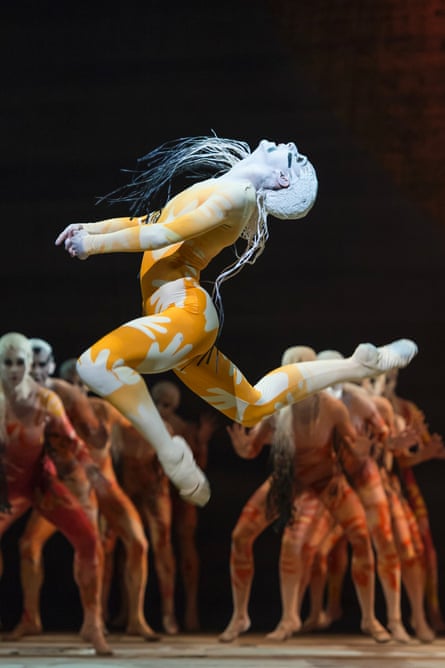
The TS Eliot of 1915 was just the sort of immigrant who today Theresa May would like to send back to his home country. Having come to the end of his course of study at Oxford, he was hanging around in Soho while “of no occupation”. Today, though, Eliot’s impact is global. He was more thoroughly educated than any other 20th-century poet – he had studied a daunting range of subjects, from Sanskrit and advanced mathematics to Japanese Buddhism and classical Greek. While most of us in later life screen out huge areas of our education, Eliot maintained that the artist should be very sophisticated intellectually – but also strikingly primitive.
Poetry in a complex era had to reflect, or at least refract, a sense of complexity; yet it needed to reach back, too, to something primal, to sound and re-sound what Eliot termed “the beating of a drum”. Decades later, the remarkable Nigerian poet Christopher Okigbo recognised this when, shortly before his death in the Biafran war, he produced – in “Lament of the Drums”, “Path of Thunder” and other poems – work at once distinctive and immersed in the cadences and “broken images” of Eliot’s verse. When, in our own era, the Australian poet Les Murray produces a poetry that articulates both a totemistic animal presence and an awareness of 21st-century stacked, screen-saturated lives, he inherits an understanding of what Eliot thought poets had to do.
Eliot became a global presence remarkably quickly. The Waste Land in particular made an impression on cultures very different from St Louis, Boston, Paris and London – the cities that shaped him most. In England, the 27-year-old Japanese poet Nishiwaki Junzaburō read it as soon as it appeared in 1922. Nishiwaki carried its influence back to Japan where reference to “April’s suffering” marked a recasting of The Waste Land’s opening words; after Hiroshima it made all too much sense for poet Nobuo Ayukawa to contend that “the modern world” had become “a waste land”.
Much of The Waste Land was written during the aftermath of the first world war. In Europe the poem was heard less as Eliot’s mixture of “rhythmic grumbling” and cri de coeur (which it was) and more as a lament for modern European civilisation. In Asia, though, the poem offered metaphors for quite different national catastrophes. Just days after she published the first full Chinese translation of The Waste Land in June 1937, Zhao Luori saw the catastrophic second Sino-Japanese war break out. Suddenly her translation could be seen to articulate modern Chinese cultural and political trauma. As the 21st-century scholar Lihui Liu argues: “The terrible situation of the 1930s moved some young Chinese poets to identify Eliot as virtually their spokesman.”
Eliot’s profound but unsettling interrogation of ideas of tradition also struck – and still strikes – a deep chord with China. “Tradition and the Individual Talent” was the first of his works to be translated there. Mid-20th-century Chinese poets who engaged with Eliot’s work were fascinated by continuity and disruption in their own, and other, cultural histories. So, when I met the influential poet-critic Yuan Kezia in 1986, he was visiting Britain as a poet and translator of modernist literature and as someone to whom Eliot’s work had mattered a good deal; yet he was also, as he made sure to tell me, “the translator of Burns”. To English readers, it may seem strange to connect Robert Burns and TS Eliot; yet to Scottish or Chinese readers the juxtaposition can make sense: both these poets are tradition-bearers whose ideas blended continuity and disruption, fusing modern literary culture with oral heritage. Some of the most powerful lines in Eliot’s work, after all, come from nursery rhymes – whether The Waste Land’s “London Bridge is falling down falling down falling down” (a telling line in a poem obsessed with loss of connection), or that distorted nursery rhyme beginning “Here we go round the prickly pear” in “The Hollow Men”.
Eliot’s work, and not least The Waste Land, resonates on every continent. In South America, Jorge Luis Borges wrote a significant essay on “La eternidad y TS Eliot”, while the 21st-century Mexican poet and critic Pedro Serrano likes to align Eliot with one of his most important Mexican readers, the great poet Octavio Paz. In Eliot’s native land, Christopher Ricks has argued that Eliot has affinities with a poet of a later generation, Anthony Hecht. Having perforated the refined polite mask of Bostonian society, Eliot himself admired the poetry of a quite different New Englander, Robert Lowell, whose Life Studies managed to articulate in verse something that Eliot could not quite capture in his own greatest poetry – familial love.
Eliot is a great love poet, but his sense repeatedly is of love frustrated, lost or gone wrong. Few poets have dealt so profoundly with the themes of childlessness, of longing, of ageing. Eliot remains one of the greatest religious poets in the language, and that, too, has added to his global reach as well as enriching his adopted and adapted European sensibility. In Greece George Seferis recast Eliot and learned how to fuse (as Eliot does) a feeling for urban modernity with a deep love of the sea. From his childhood, Eliot contemplated the Atlantic Ocean and knew what it meant to face up to death. In boyhood he had lived through a cyclone that destroyed much of his native St Louis; the poet of “Death by Water” was also a young man who had risked his life at sea. In Italy, while it was it was Mario Luzi who recast Eliot’s most beautiful maritime poem of loss and longing, “Marina”, as a new poem in Italian, it is the Nobel prizewinning Eugenio Montale, a presenter of desolate landscapes and an interrogator of past literary tradition, who is often seen as a kindred spirit to Eliot. Yet there may be an affinity, too, between the poet of The Waste Land and that much younger, Dresden-born poet Durs Grünbein who, like Eliot, hauls back from the world of the Greek and Latin Classics material that resonates with the worst horrors of the 20th century.
In English, Eliot, the greatest poet of London, is also the greatest poet of the second world war – not because he fought in it, but because he registered so fully its struggle and destruction: the houses that turned to dust, the raids, the need to persist against wholly unfavourable odds. Those are some of the elements that power “East Coker”, “The Dry Salvages”, and “Little Gidding”. The last named of the Quartets in particular draws on Eliot’s experience as a fire watcher during the London blitz, while “The Dry Salvages”, drawing on and addressing his own American past, was written in the period before America entered the second world war and as Britain was facing defeat. Though in no way directly propagandistic, Eliot’s poem nonetheless seems geared to encourage Americans to understand the necessity of persisting in struggle. After the second world war, as after the first, Eliot went out of his way to voice his Europhilia, his belief in European unity and “the mind of Europe”. All this contributed to his being regarded, rightly, as an Anglophile poet who could contend at one moment that “History is now and England”, but who could see, too, the importance of a sense of pan-European civilisation. So, in the decades after 1945, the importance of this poet to whom Dante mattered as much as Shakespeare can be seen as emblematising European cultural politics. There is a European Eliot, an English Eliot, an American Eliot, an Indian Eliot, a Chinese Eliot: this proliferation of Eliots has made him all the more a world poet.
So when, on Monday in London, the Poetry Book Society and the TS Eliot Trustees host a group of contemporary poets for the TS Eliot prize award ceremony, honouring “the best collection of poetry published in 2014” at an event marking the 50th anniversary of TS Eliot’s death, whether or not the winning poet echoes Eliot directly is immaterial. More than any other 20th-century poet, Eliot showed how to balance tradition and modernity – that is his true legacy; as poet, publisher, critic and editor, his art opened up the space in which we write and read. Sometimes people try to caricature him; his detractors must grant him his full complexity, just as his fans must acknowledge that his background was not just one of ragtime and high culture but also of familial antisemitism and attitudes to race that trouble St Louis to this day. To appreciate him requires an acknowledgement that his life and work were full of daring, astuteness and a preternaturally acute ear for language. Anything else is bullshit.
Robert Crawford’s biography Young Eliot: From St Louis to The Waste Land is published by Cape on 5 February.

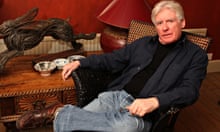



Comments (…)
Sign in or create your Guardian account to join the discussion